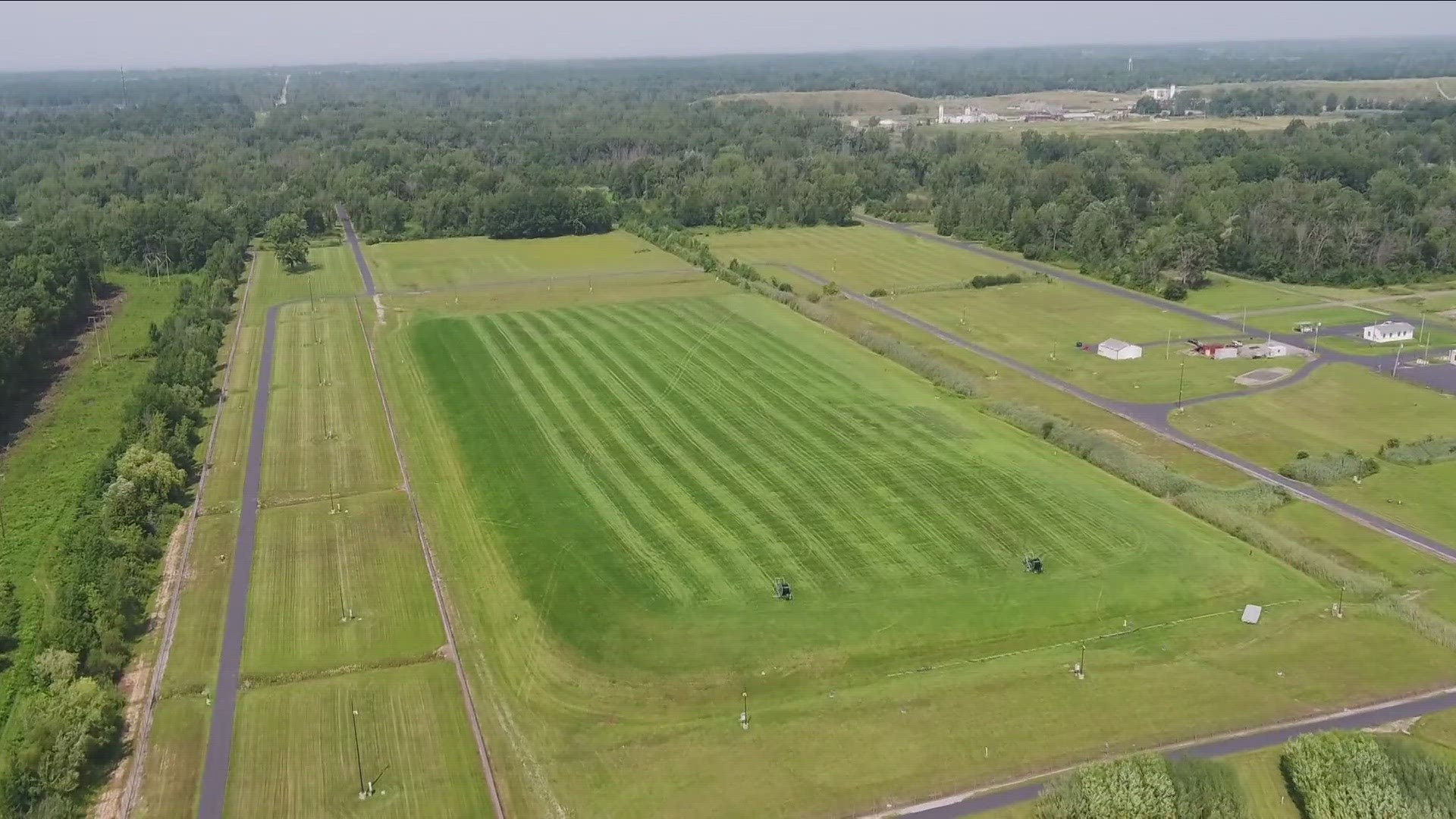LEWISTON, N.Y. — The Army Corps of Engineers (USACE) has been tasked with overseeing the cleanup and remediation of the Niagara Falls Storage Site since 1997.
The NFSS, as it's often referred to, sits on the land that was once Lake Ontario Ordnance Works.
LOOW, as it's often referred to, was a 7,500-acre TNT manufacturing facility built in 1942. When it went online in October of that year, the factory produced 390,000 tons of TNT every day.
But even at the height of World War II, there's only so much TNT the military needed. Production at the facility halted nine months later in July 1943.
Shortly after the TNT manufacturing ceased, the Manhattan Engineering District began sending waste to the Niagara County Site.
Everything from uranium, radium, cesium and thorium have been detected throughout the LOOW and NFSS site.
Since 1997 the Army Corps of Engineers have conducted routine testing and monitoring of the Interim Waste Containment Site, the clay-covered pit where 250,000 cubic yards of Manhattan Project waste have been stored. The IWCS was first built in 1986.
When it was constructed, the IWCS only had a 25 to 50-year lifespan, and finding a more permanent solution for the waste was always a priority for the USACE.
Last week they awarded a $40 million contract that will begin phase one of the remediation in property around the IWCS within the Niagara Falls Storage Site.
"This is not the interim waste containment structure. It's everything outside of that," said Amy Gaskill, public affairs specialist for the USACE Buffalo District. "We've been sampling and doing investigations along this site for many years and understand exactly where these pockets of contaminants are."
While USACE knows where the contamination outside the interim waste containment site is, the best way to remove it off site has yet to be determined.
"What the contractor is going to be doing for us is developing a work plan in this first phase, to help us understand how they're going to safely move these contaminated soils off site so that there is no risk at all to human health outside of this facility," Gaskill said.
A public hearing will be hosted by the Army Corps of Engineers in February 2024, after that the design will take several more months to complete.
"We're going to developing our work plans over the cold months," said project manager Brent Laspada. "We're anticipating probably somewhere in the spring summer timeframe we'll be doing the majority of the work here."
Laspada says the phase one work will take about one year to complete.
Completing phase one will make way for the $500M phase II, where the Army Corps will oversee the complete removal of nearly 390,000 tons of waste that is currently residing in the IWCS.
While that project is still several years from beginning, the decision to remove all the waste, according to Laspada, was the fight the community put up throughout the 90's and early 2000's.
"One of the things we heard was remove it, and get rid of it," Laspada said. "We listened as an organization."

